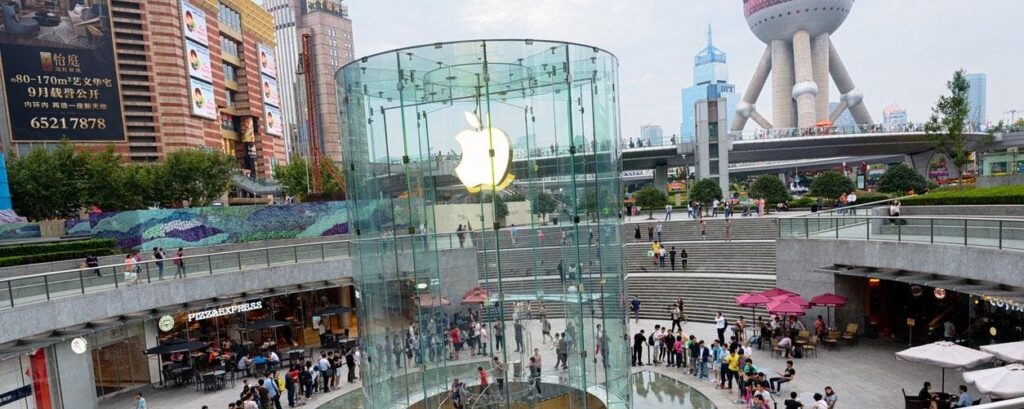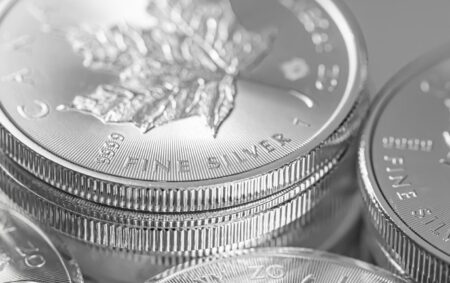Key News
Asian equities had a good start to the week, except for Taiwan, as Hong Kong outperformed following Friday night’s electronics tariff exemptions, though markets seemed to ignore the fact that the reprieve could be temporary.
A distinct pattern is occurring: fewer tariffs and markets up, but more tariffs and markets down. Let’s hope folks in DC notice.
Thailand was closed for the Songkran Festival, which is also known as the Thai New Year, while India was closed for Ambedkar Jayanti, observed annually on April 14, commemorates the birth anniversary of Dr. B.R. Ambedkar, one of India’s most influential social reformers and the principal architect of the Indian Constitution.
What a difference from last Monday’s meltdown, which I’m still trying to forget!
After the close, electric vehicle (EV) and hybrid battery maker CATL announced that Q1 revenues increased by +6.18% to RMB 84.71 billion, net profit increased by +32.85% to RMB 13.963B and EPS +33.05% to RMB 3.18.
Strong credit growth in March supported markets overnight, though imports were weaker than expected. Remember that imports are heavily influenced by commodity prices, which is why you should look at tons imported versus the percentage change. Coal and steel import volumes had strong increases, though soybeans were off.
No new domestic consumption stimulus has been announced yet, though the South China Morning Post had an article highlighting the efforts by local governments to provide consumption stimulus. The lack of news is disappointing, though there continues to be chatter that it is coming soon.
Consumer Discretionary stocks were top performers in both Hong Kong and Mainland China, which hopefully indicates that stimulus is coming. Hong Kong had a strong day, led by growth stocks. Xiaomi fell -2.37% after announcing a RMB 20 billion bond sale. However, internet stocks had a solid day, as Alibaba gained +5.05%, Tencent gained +2.39%, Meituan gained +1.67%, JD.com gained +2.45%, Kuaishou gained +1.82%, and Baidu gained +3.98%. Apple’s suppliers rebounded on the tariff news in both Hong Kong and Mainland China.
Healthcare was the top-performing sector in Hong Kong, where it gained +5.08% on speculation that the US’ heavy dependence on China’s medical imports will lead to a similar tariff reprieve.
Insurance had a strong day after the People’s Insurance Company of China’s (PICC) better-than-expected Q1 results.
Hong Kong Exchanges & Clearing gained +6.91%, as US ADR delisting fears are expected to ignite filings for Hong Kong relistings. A Hong Kong official said they would encourage the SFC, Hong Kong’s SEC, to expedite relisting paperwork. If someone said, “I have a plan to erase $1 trillion of US savings,” they would be mocked as US investors and not Chinese investors are holding the stocks. The false truths stated about the US listings not being SEC compliant or about the VIE structure are mind-boggling, considering the SEC approved every company to list here.
Mainland investors bought a net $745 million worth of Hong Kong-listed stocks and ETFs via Southbound Stock Connect. Mainland stocks also had a good day with strong breadth. ETFs favored by the “National Team,” i.e., investment firms associated with China’s sovereign wealth, had below-average volumes, though a Mainland article noted favored ETFs’ volume increased +80% last week from the week before. Another article noted insurance companies are expected to raise equity investments from RMB 50 billion to RMB 162 billion this year.
Chinese Academy of Social Sciences’ Yu Yongding’s commented that the People’s Bank of China (PBOC), China’s central bank, should reduce the bank reserve requirement ratio and interest rates while expanding fiscal policy. These comments garnered attention and help define what expectations we should have of the bank in the near future.
The Wall Street Journal’s James Mackintosh wrote a great piece titled “Will the Last Investor to Leave America Please Turn Out the Lights,” highlighting what in China is being called the “three kills”: US stocks, US bonds, and the US dollar, all declining simultaneously. This is problematic, though more so for foreign investors, as their losses are compounded by the US dollar’s decline. Mackintosh points out that foreign investors own $26 trillion more of US assets than US investors own in foreign assets. Our analysis looking at US Treasury data shows foreign investors owned just shy of $17 trillion of US stocks as of Q2 2024, which is the latest available information. The 16-year (64-quarter) US bull market has made the US overweight in every investor’s portfolio, in my opinion. Mackintosh asks what the end game could be with tariffs. Stephen Miran, the Chairman of the Council of Economic Advisors, is viewed as the architect, and his book A User’s Guide to Restructuring the Global Trading System could be the game plan. Stephen Kirkman of the AEI does a good job ripping the fantasy piece, which is behind speculation of a Mar-a-Largo Accord, as tariff plans are ripped apart by applying Economics 101 principles to it. So where does that leave us? As we witnessed last Tuesday night when the US Treasury yields spiked during Asia trading hours, markets and economic principles can’t be defied. We are witnessing the most expensive ECON 101 class ever!
What a Master’s finish! An emotional roller coaster.
The Hang Seng and Hang Seng Tech indexes rose +2.40% and +2.34%, respectively, on volume that decreased -8.33% from Friday, which is 144% of the 1-year average. 418 stocks advanced, while 66 stocks declined. Main Board short turnover decreased -3.43% from Friday, which is 154% of the 1-year average, as 16% of turnover was short turnover (Hong Kong short turnover includes ETF short volume, which is driven by market makers’ ETF hedging). Small caps and the value factor both outperformed growth and large cap stocks. Information Technology fell -1.14% and was the only negative sector, while Healthcare gained +5.09%, Materials gained +3.55%, and Consumer Discretionary gained +3.45%. The top-performing subsectors were household & personal products, consumer durables & apparel, and non-ferrous metals. Meanwhile, construction was the worst-performing subsector. Southbound Stock Connect volumes were 3X pre-September 2024 stimulus levels as Mainland investors bought a net $1.51 billion worth of Hong Kong-listed stocks and ETFs, led by Alibaba, CNOOC, Hua Hong Semiconductors, Xiaomi, and Meituan, which were all small net buys. Meanwhile. Semiconductor Manufacturing International (SMIC) and Tencent were small net sales.
Shanghai, Shenzhen, and the STAR Board all closed higher by +0.76%, +1.15%, and +0.25%, respectively, on volume that decreased -5.15% from Friday, which is 105% of the 1-year average. 4,275 stocks advanced while 782 stocks declined. Value and large-cap stocks outperformed growth and small-cap stocks. Real Estate, which fell -0.34%, and Consumer Staples, which fell -0.60%, were the only negative sectors. Meanwhile, the top performing sectors were Energy, which gained +1.99%; Materials, which gained +1.33%; and Consumer Discretionary, which gained +1.09%. The top-performing subsectors were leisure products, precious metals, and office supplies. Meanwhile, liquor, construction machinery, and household appliances were among the worst-performing subsectors. Northbound Stock Connect volumes were above average. CNY appreciated while the Asia Dollar Index both fell versus the US dollar. Treasury bond prices fell. Copper and steel rose.
Live Webinar
Join us on Thursday, April 10, 2025 at 10 am EDT for:
Tariff Briefing and Q&A With KraneShares
Please click here to register
New Content
Read our latest article:
New Drivers For China Healthcare: AI Med-Tech Innovation, Cancer Treatment, & Favorable Balance of Trade
Please click here to read
Last Night’s Performance
Last Night’s Exchange Rates, Prices, & Yields
- CNY per USD 7.31 versus 7.29 yesterday
- CNY per EUR 8.28 versus 8.25 yesterday
- Yield on 10-Year Government Bond 1.66% versus 1.66% yesterday
- Yield on 10-Year China Development Bank Bond 1.71% versus 1.70% yesterday
- Copper Price +1.44%
- Steel Price +0.16%
Read the full article here











